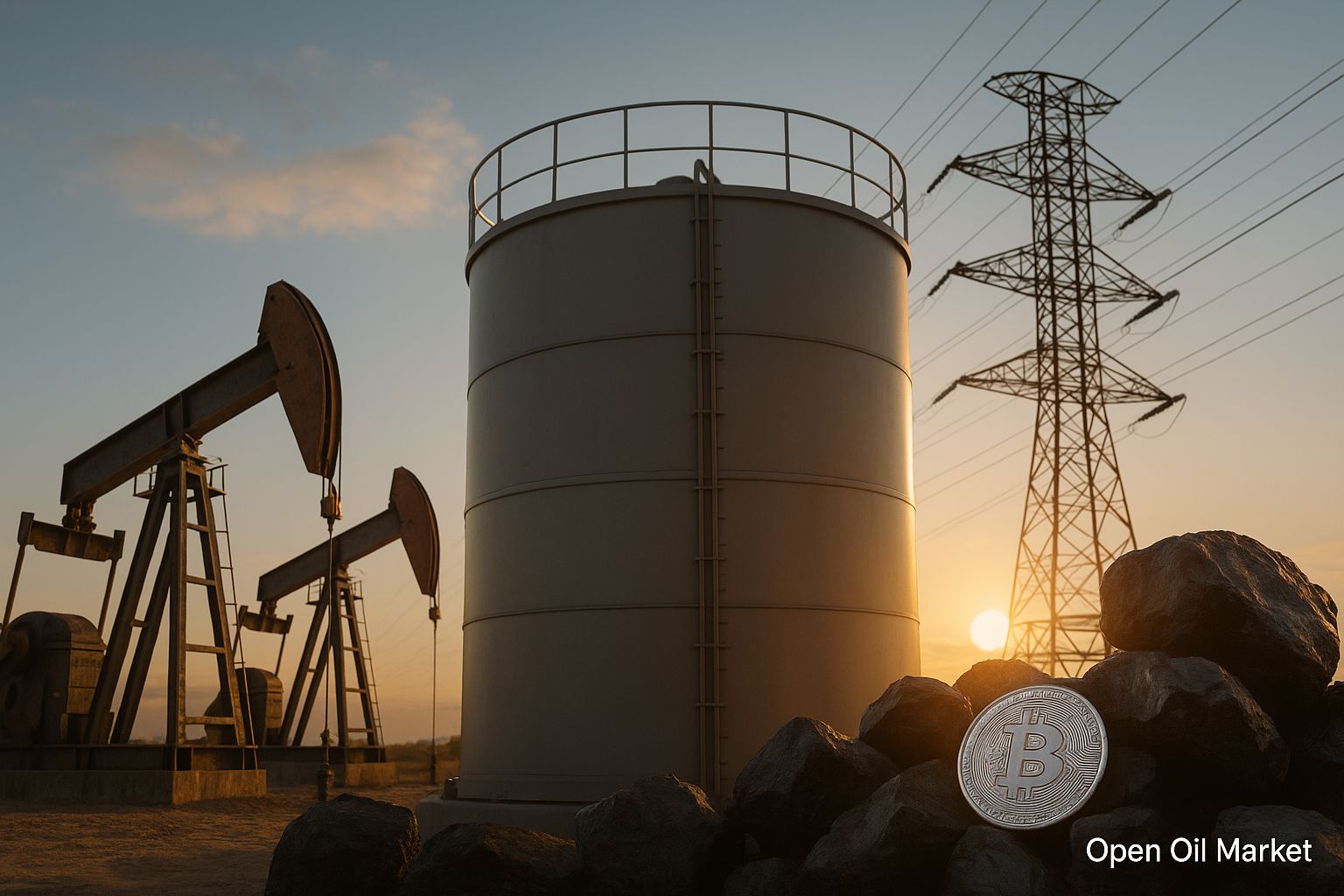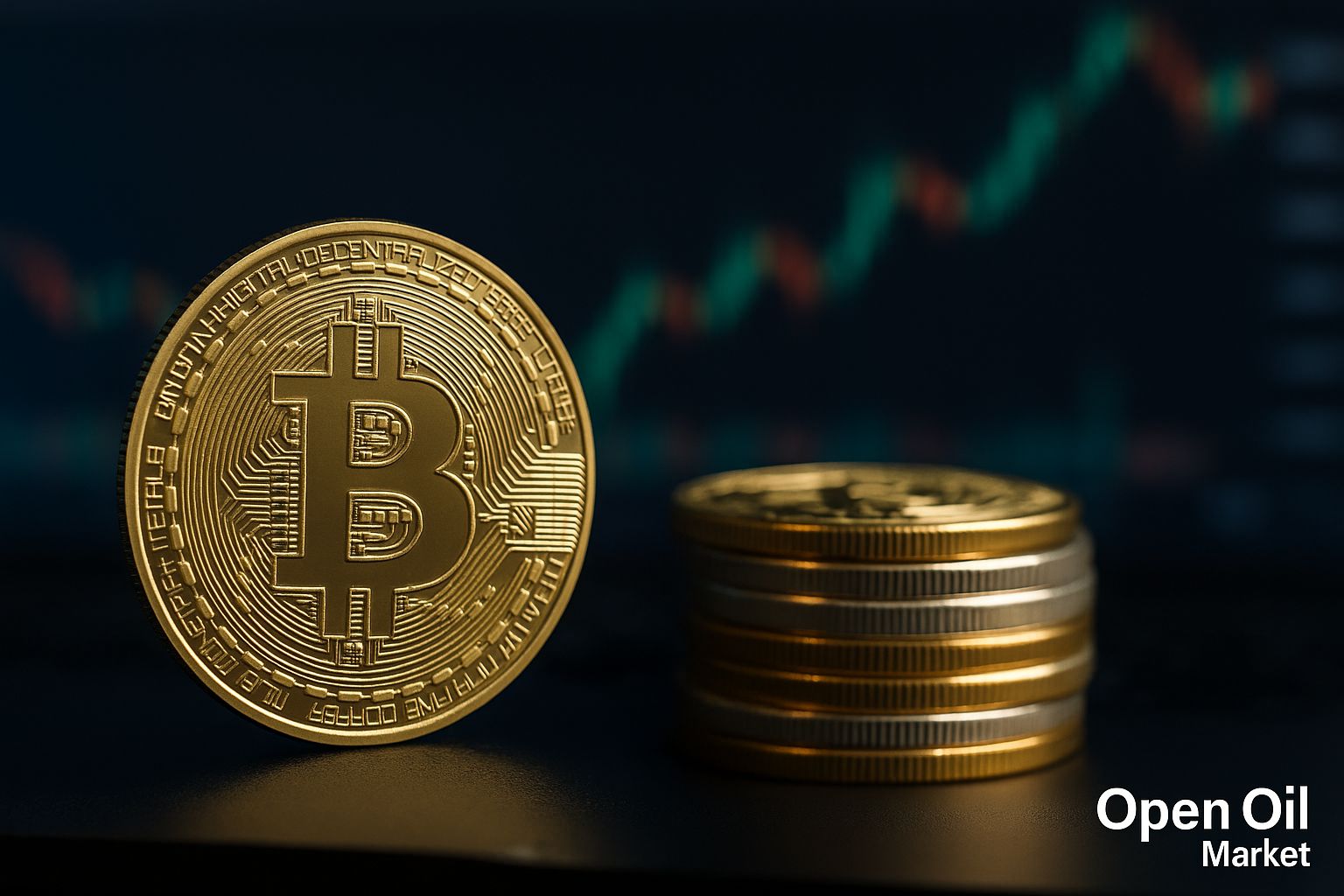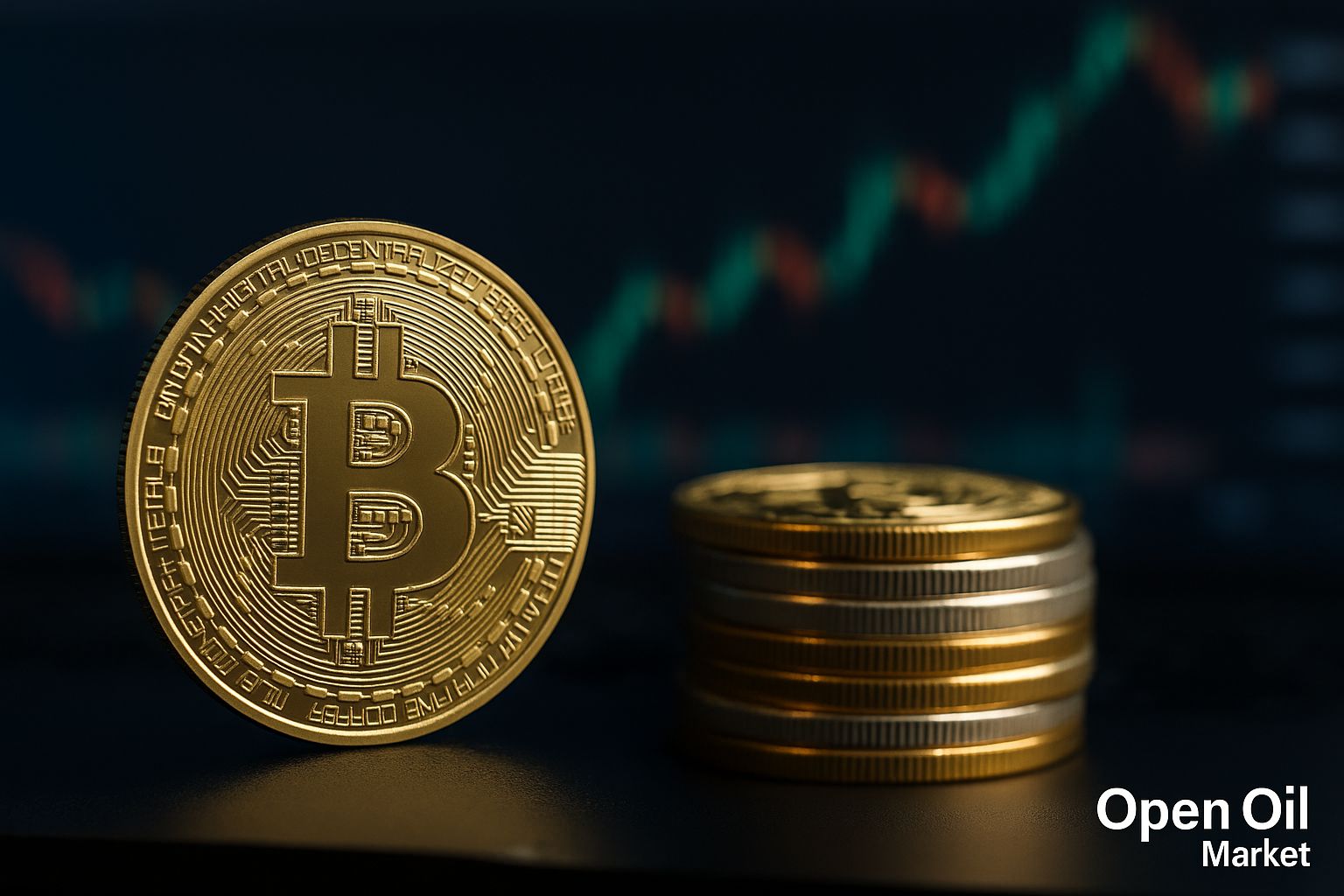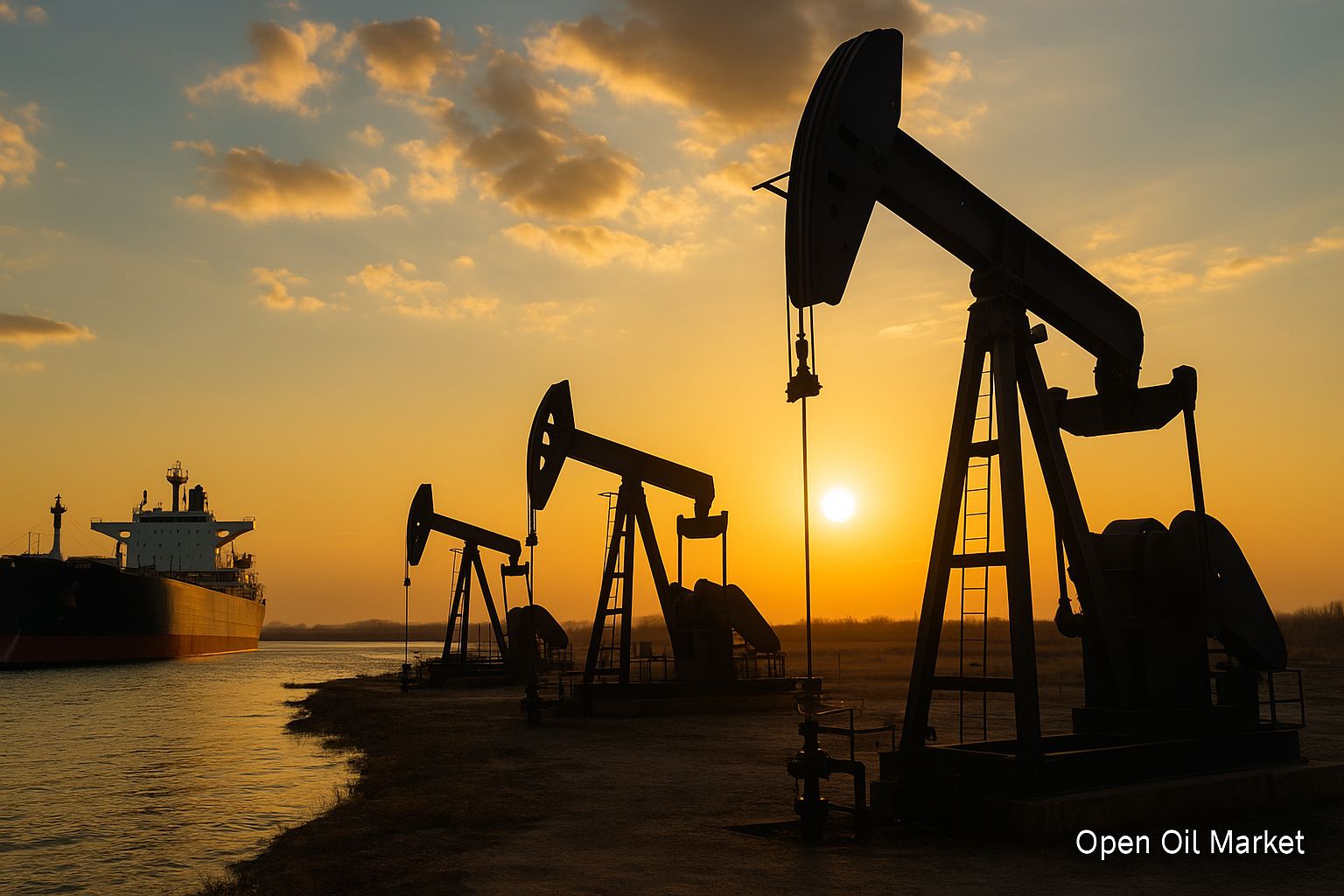
Key Energy Sector News for 31st October 2025: US-China Trade Truce Supports Oil Prices, Record Gas Supplies in Europe Ensure Stability, and the Russian Fuel Market Recovers from Crisis. An Analysis of Key Events and Outlook for Investors.
As of 31st October 2025, developments in the fuel and energy sector are occurring against a backdrop of sustained geopolitical tension, yet positive signals are emerging in the markets. The sanctions confrontation between Russia and the West is intensifying, with the US recently imposing stringent restrictions on the largest oil and gas companies in Russia, and the European Union closing loopholes to circumvent the embargo. Nevertheless, the global economy received an injection of optimism – during a meeting on 30th October, leaders from the US and China agreed to a trade truce, avoiding a new round of tariff wars. The prospects of easing relations between the two largest economies have improved forecasts for global energy resource demand and bolstered sentiments in the commodity markets.
The commodity markets are demonstrating relative stability. Oil prices, which had dropped to multi-month lows earlier this autumn, are holding steady within a moderate range: Brent crude is trading around $65 per barrel, while WTI hovers around $61. Recent news about sanctions caused fluctuations in quotations (Brent briefly rose above $66), but in general, the balance of supply and demand remains fragile, skewed towards surplus. The European gas market is confidently entering winter with record fuel reserves: underground storage in the EU is over 95% filled, leading to gas prices dropping to a comfortable ~€30 per MWh (well below the peaks of 2022). The global energy transition is gaining pace – investments in renewable energy are reaching record highs, with the share of renewables in electricity generation steadily rising, although countries still rely on traditional resources to meet base load demands. In Russia, emergency measures to stabilise the domestic fuel market are yielding results: gasoline and diesel production have been restored, wholesale prices have fallen from peak levels, and fuel stations are adequately supplied. Below is a detailed overview of key sectors in the oil, gas, coal, and energy markets as of the current date.
Oil Market: Balancing Surplus and Risks Amid Trade Truce
Global oil prices remain under pressure from fundamental factors, despite short-term spikes. Following an autumn decline to multi-month lows, Brent quotations have stabilised within the ~$60–65 per barrel range, significantly lower than the beginning of the year. The market anticipates a scenario where, by the end of 2025, oil supply will exceed demand. Several trends are contributing to this:
- Increase in production amid slowing demand. OPEC+ countries are set to gradually increase output: in October, the overall quota was raised by approximately 0.14 million barrels per day, with a similar move expected in November. Concurrently, major non-OPEC producers, particularly the US and Brazil, are producing record amounts of oil. However, global consumption growth is slowing. According to the International Energy Agency (IEA), in 2025, oil demand is expected to increase by only ~0.7 million barrels per day (in comparison, the increase was over 2 million in 2023). The world economy is growing modestly, the effects of past price peaks have stimulated energy-saving efforts, and the accelerated adoption of electric vehicles is curtailing fuel consumption growth. Earlier in 2025, the escalation of trade disputes between the US and China also dampened demand; however, the recent trade agreement between Washington and Beijing now enhances forecasts and reduces part of the uncertainty.
- Geopolitics and sanction risks. The tightening sanctions against the Russian oil sector maintain a cloud of uncertainty over the oil market. The US has effectively prohibited cooperation with key Russian oil companies, sanctioning entities like "Rosneft" and "Lukoil". The EU and the UK are closing off trade routes for Russian energy resources (including banning the re-export of oil products originating from Russian crude through third countries). Furthermore, discussions regarding a complete international embargo on Russian oil are ongoing. Concurrently, military risks persist: in recent months, there has been an uptick in drone attacks on oil infrastructure in Russia, leading to temporary shutdowns of certain refineries and production cuts. Lastly, political pressure on major importers of Russian raw materials is beginning to yield results: for instance, under pressure from Western partners, India has expressed readiness to gradually cut its imports of Russian oil in the future, although it cannot immediately refrain from purchasing. Any abrupt constraints on exports from Russia – whether due to sanctions or force majeure – could reduce supply in the global market and trigger a price surge.
Thus, the oil market is currently balancing between oversupply and geopolitical risks. The production surplus is preventing prices from rising significantly, yet the impacts of sanctions and potential shifts in flows (for example, a reduction in Indian imports) are keeping quotations from falling substantially below current levels. Many analysts anticipate that, in the absence of new shocks, oil will trade at relatively low prices – around $60 per barrel – which is advantageous for consumers. At the same time, producers and investors remain cautious, considering the possibility of sudden changes in the market environment.
Gas Market: Record Reserves in Europe and Reevaluation of Flows
The gas market has developed into a situation favourable for consumers, especially in Europe. The continent is entering the winter period with unprecedented gas reserves: underground storage in EU countries is over 95% full, which is 5-7% higher than last year's level. A mild autumn and active LNG imports have enabled such reserves to accumulate without emergencies, resulting in stabilised wholesale gas prices at low levels. Futures at the TTF hub hover around €30-35 per MWh – this is markedly lower than the peak levels of 2022. The likelihood of a repeat of last winter's price crisis has diminished significantly, although much now hinges on how cold the winter will be and whether there will be interruptions in LNG supply.
- Europe is ready for winter. Record gas reserves in the EU create a strong buffer for prolonged cold weather. Demand for gas in the region remains restrained: economic growth in the European Union is low, and the high generation of electricity from renewable sources (RES) in autumn has reduced the load on gas-fired power plants. Even during anomalous frosts, a substantial portion of additional consumption can be covered by reserves, notably reducing the risk of shortages.
- Record LNG imports. To compensate for reduced pipeline supplies from Russia, European countries have increased their imports of liquefied natural gas. The waning demand for LNG in Asia this autumn has freed additional volumes for Europe. Major suppliers – the US, Qatar, Australia, and others – are operating at maximum export capacity, redirecting fuel to the European market. LNG imports have nearly entirely replaced the volume of Russian pipeline gas lost and even cover declines in production at North Sea fields. The high inflow of LNG helps maintain a balanced market and prevents sharp price fluctuations.
- Russia's 'Eastern Turn.' Having lost much of its European market, Russia is actively redirecting gas exports to the East. Supplies via the 'Power of Siberia' pipeline to China in 2025 have reached record levels (close to the projected capacity of ~22 billion cubic meters per year). Moscow is also promoting new projects: preparations are underway to construct the 'Power of Siberia – 2' pipeline through Mongolia, which will partially replace lost European demand by the end of the decade. Additionally, new LNG production capacities have been launched in Yamal and Sakhalin, and fresh batches of Russian LNG are being sent to China, India, and other Asian countries. While total gas export from Russia is still below pre-sanction levels, the sector is adapting to new realities through Eastern markets and prioritising domestic supply.
Overall, the global gas sector is approaching the onset of winter with solid resilience. The unprecedented reserves in Europe and the flexibility of reallocating global gas flows suggest price stability in the coming months. Unless there are extreme cold spells or other force majeure situations, gas prices are expected to remain at comfortable levels for consumers, and the market – balanced. However, market participants continue to monitor weather risks and competition for LNG from Asia, recognising that the situation may change.
International Politics: Sanction Confrontation and Realignment of Energy Flows
The end of October is characterised by further escalation of sanction pressure on the Russian fuel and energy sector and lack of progress in dialogue. The US has expanded sanctions, effectively blocking cooperation with the major Russian oil and gas companies and targeting carriers of Russian raw materials (the so-called “shadow fleet” of tankers). The European Union continues to tighten restrictions: new bans on circumvention schemes for trading oil and petroleum products through third countries have been introduced, alongside a plan for a complete cessation of imports of Russian pipeline gas by 2026. Moscow has sharply condemned the new restrictions and expressed its intention to defend its interests: Russian authorities promise to redirect energy exports to friendly countries and are prepared to take retaliatory measures if necessary.
Meanwhile, the political dialogue between Russia and the West remains at an impasse. Following a symbolic meeting between the leaders of Russia and the US last summer in Alaska, no significant shifts occurred. Washington has made it clear that it does not intend to soften its sanction regime without resolving the geopolitical conflict, while Moscow refuses to alter its position under pressure. In the West, discussions around new, even more radical sanction measures are taking place. Consequently, the sanction confrontation continues to define the external conditions under which the sector operates, creating increased geopolitical risks for global energy markets and compelling nations to restructure their trade chains.
Asia: India and China Maintain High Imports and Ramp Up Domestic Production
Asian countries continue to play a key role in global energy resource markets, remaining the largest consumers of oil and gas. **India** has made it clear that it cannot sharply reduce imports of Russian oil and gas without jeopardising its energy security. Despite external pressure, New Delhi actively continues to import fuel from Russia: Russian Urals oil is sold to India at substantial discounts to the Brent price, making such purchases advantageous. India’s import volumes of oil, petroleum products, and coal from Russia in 2025 remain close to record highs. Concurrently, India is striving to reduce dependence on external supplies in the future by investing in exploration and development of domestic fields, as well as expanding infrastructure for receiving diverse imports (for example, LNG terminals).
**China** has also increased purchases of relatively cheap Russian raw materials, capitalising on the situation. Beijing has not joined Western sanctions and is importing significant volumes of Russian oil and gas, although the growth rates of these supplies have slowed due to last year's high base. By the end of 2025, China is estimated to cover about 70% of its oil needs and approximately 40% of its natural gas needs through imports – these figures remain among the highest in history, despite gradual growth in domestic production (a few percentage points per year). Chinese national companies are investing in increasing domestic oil and gas production and the development of alternative energy sources, but in the foreseeable future, the country will remain heavily reliant on external supplies. Therefore, India and China continue to act as the largest drivers of energy demand while simultaneously seeking to strengthen their own resource base to better balance their energy security.
Energy Transition: Record Investments in Renewables Amid Continued Role of Traditional Energy
The global shift to clean energy is accelerating in 2025. Many countries are introducing new capacities in solar and wind generation, which are leading to record electricity production from renewables. Preliminary data indicates that in 2025 the total electricity generation from wind and solar power plants worldwide has first surpassed that of coal-fired power plants. Investments in renewable energy are reaching historic highs: government incentive programmes and “green” funds have resulted in hundreds of billions of dollars flowing into the development of wind and solar parks, grid infrastructure, and energy storage systems. The share of renewable sources continues to rise steadily within the global energy balance.
At the same time, traditional fuels maintain a crucial role in meeting demand. Despite the rapid progress of renewables, oil, gas, and coal continue to provide the lion's share of the world's energy, especially for industry and transport. In many regions, the stability of energy systems is supported by gas and coal power plants, which safeguard the grid amid fluctuating output from solar and wind sources. Governments and companies are increasingly investing in energy storage technologies, “clean” hydrogen, and other solutions capable of mitigating the inherent variability of renewables. However, the transition to a carbon-neutral economy remains a long-term challenge: in the coming years, the world must balance growth in generation from clean sources with ensuring reliability of energy supply through modernisation of traditional infrastructure.
Coal Market: High Demand in Asia and Gradual Phase-Out of Coal in the West
The global coal sector in 2025 is demonstrating mixed trends. High demand for coal persists in Asia, while developed countries are accelerating their phase-out of this fuel as part of their environmental agenda. During the summer, East Asia witnessed a surge in consumption: heat and peak loads led to increased coal generation. For instance, China, Japan, and South Korea's total coal imports in August were nearly 20% higher than in July. This temporarily pushed Newcastle thermal coal prices (Australia) above $110 per tonne – the highest level in the last five months. Major exporters – Indonesia, Australia, Russia, South Africa – responded to the high Asian demand with increased production and shipments, helping prices return to a stable range in autumn.
At the same time, outside of Asia, the role of coal is being systematically reduced. In the European Union, the share of coal generation has fallen below 10% (compared to about 15% a few years ago), with 11 EU countries officially declaring plans to fully close coal-fired power plants by 2030, shifting towards gas and renewables. In the US, cheap natural gas and the rapid growth of renewable energy are displacing coal from electricity generation, despite some support programmes for coal producers. Even countries historically reliant on coal are reducing its use: Germany, which increased coal burning in 2022-2023 due to the gas crisis, has again lowered generation at coal plants in 2025. As a result, global coal prices are significantly lower than previous year levels: data for the first half of 2025 shows export prices have dropped by 25-30% compared to the same period in 2024, reflecting weakened demand outside of Asia.
For Russia, one of the world's largest coal exporters, current trends present both opportunities and risks. Following the EU embargo in 2022, Russian companies have shifted their supplies from Europe to the Asia-Pacific region: over 75% of Russian coal exports now go to China, India, Turkey, and other APEC countries. Eastern markets are largely compensating for the loss of European markets, but long-distance trade requires offering discounts and results in increased transportation costs. In light of the global phase-out of coal, Russian coal producers will need to adapt to declining demand - seeking new buyers, developing deep processing projects, or shifting to domestic initiatives (for example, “clean coal” for energy and industry). The resilience of the coal business will depend on flexibility and efficiency: profitability in Asian markets may still be achievable for a few more years, but new large projects pose the risk of lost sales by 2030-2040. Companies and investors in the coal sector are already focusing on diversification, cost control, and collaboration with the government, which aims to mitigate the socio-economic consequences of the shrinking coal sector.
Russian Fuel Market: Price Stabilisation and Stringent Supply Control
By autumn 2025, the situation in the Russian fuel products market has significantly improved compared to the tense end of summer. After acute shortages of gasoline in several regions and price surges in September, the authorities quickly implemented a set of measures that began yielding results by mid-October. Wholesale prices for gasoline and diesel have retreated from record peaks, independent petrol stations have resumed normal operations, and most regions are back to being fully supplied with fuel. However, to prevent a new crisis, the state maintains strict control and has extended stabilisation measures:
- Export restrictions. The total ban on the export of automotive gasoline, introduced at the end of September, has been extended until 31st December 2025. Export restrictions on diesel fuel also remain in force: independent traders are still prohibited from exporting diesel, while oil companies with large refineries are allowed only strictly limited exports under government control.
- Support for refining. The government has retained the “damper” mechanism and direct subsidies for oil refineries, paying subsidies for fuel deliveries to the domestic market. This encourages companies to redirect gasoline and diesel to petrol stations within the country, despite the lost opportunity for exporting. Authorities have also recommended delaying non-critical repairs and increasing oil refining to boost fuel output ahead of the winter season.
- Import and price monitoring. To eliminate shortages, the government has simplified the import of resources from abroad: import duties on gasoline and diesel have been reduced to zero until mid-2026, allowing for the import of fuel from neighbouring countries (e.g., from Belarusian refineries). Meanwhile, price monitoring at petrol stations has been strengthened: the Federal Antimonopoly Service has issued warnings to major petrol station networks for attempts to unjustifiably raise retail prices. The government is trying to avoid direct administrative price freezes, relying on market mechanisms and targeted support measures – for instance, subsidising fuel transportation to remote regions.
The set of measures is already yielding positive outcomes. Daily output of gasoline and diesel in the country has returned to pre-crisis levels by the end of October, aided by the completion of unscheduled repairs at several refineries and the redirection of some export volumes to the domestic market. Petrol stations in most regions of the Russian Federation are once again supplied with fuel without interruptions. The government hopes to get through the upcoming winter without serious disruptions but remains on high alert – at the first signs of a new shortage, additional measures will be taken, up to reinstating bans. In the strategic long-term, the sector faces the task of modernisation: there is a need to expand fuel storage and delivery infrastructure, implement digital resource distribution systems, and enhance the depth of oil refining domestically. These issues were actively discussed at the October forum “Russian Energy Week 2025”. It is clear that for the long-term sustainability of the fuel market, emergency measures alone are insufficient – comprehensive transformation and investments in proactive development of the refining sector are necessary.
Forecasts and Prospects: Cautious Optimism Before the Onset of Winter
The global energy sector is approaching the end of 2025 amid active adaptation to new realities. The ongoing confrontation between Russia and Western countries has dramatically altered global energy resource flows: Europe has effectively abandoned Russian gas and sharply decreased oil imports from Russia, while Russia has redirected its exports to Eastern markets and is strengthening energy cooperation with Asia. Simultaneously, fundamental factors are creating a relatively favourable environment for consumers. The supply of oil and gas confidently meets demand, creating a buffer – storage facilities are full, production is at high levels, and demand is growing slowly. As a result, energy prices have stabilised at moderate levels compared to the turbulent peaks of previous years.
A cautiously optimistic scenario for winter anticipates no significant upheavals. If the coming months pass without extreme cold or new geopolitical crises, global oil and gas markets will maintain equilibrium: a surplus oil market will keep prices low, while record gas reserves will prevent prices from rising even with increased consumption. For investors and industry participants, this indicates a more predictable environment in which to plan activities, although margins are lower than during years of super-high prices. However, risks have not vanished. Any escalation of the conflict, sudden sanction restrictions, or industrial incidents could quickly alter the situation and reintroduce volatility into the markets. Additionally, the long-term trend of energy transition remains in focus: as renewable capacity increases and climate policies tighten, the demand for fossil fuels will slow, and oil and gas companies must prepare for new structural changes.
Overall, the fuel and energy sector is entering 2026 with cautious optimism. Short-term threats – from fuel crises in specific countries to gas shortages – have largely been brought under control thanks to coordinated efforts from governments and businesses. Concurrently, the sector is actively adjusting to new trading routes, seeking growth points amid sanctions, and investing in technological development. The resilience of energy markets will depend on the ability of all participants to remain flexible and responsive to challenges – whether it be market surplus or political upheavals. For investors, it is crucial to balance leveraging current conditions (low resource prices stimulating demand) with strategic moves in anticipation of inevitable changes in the future.




